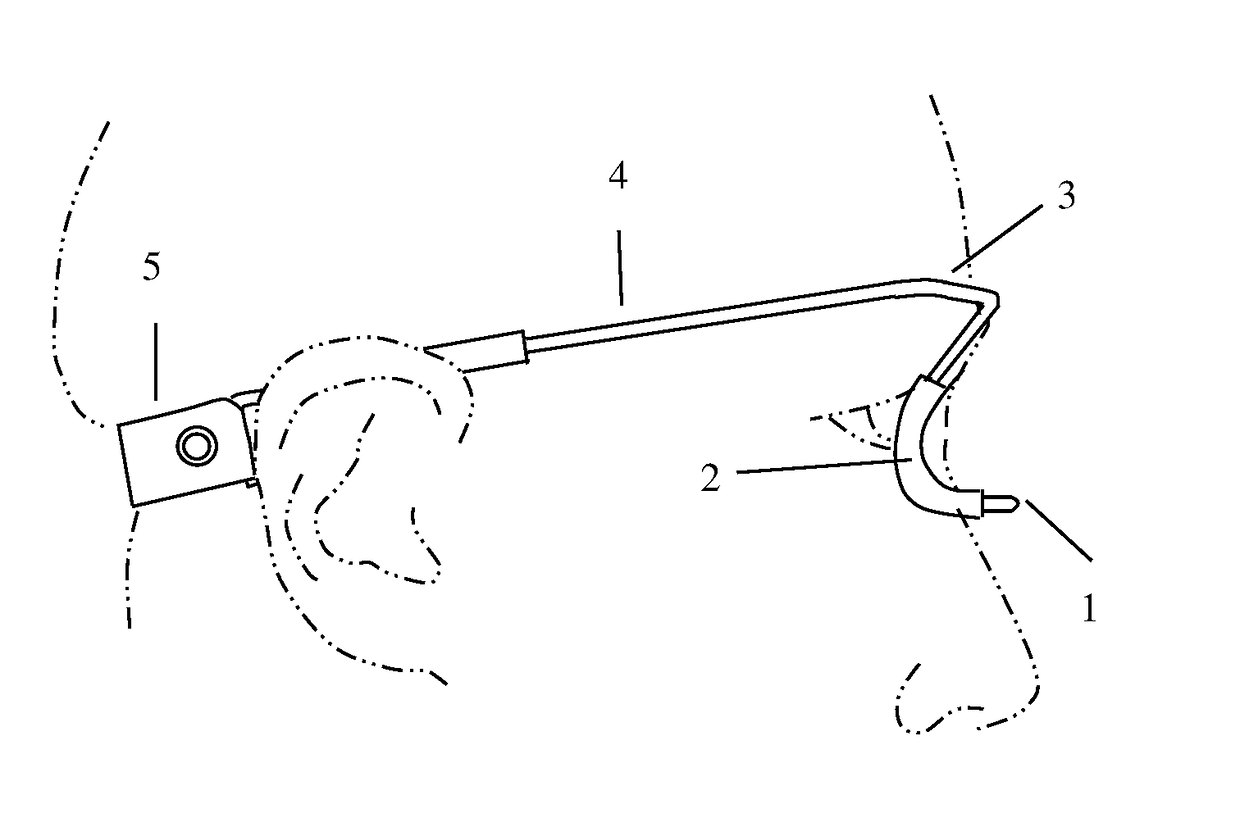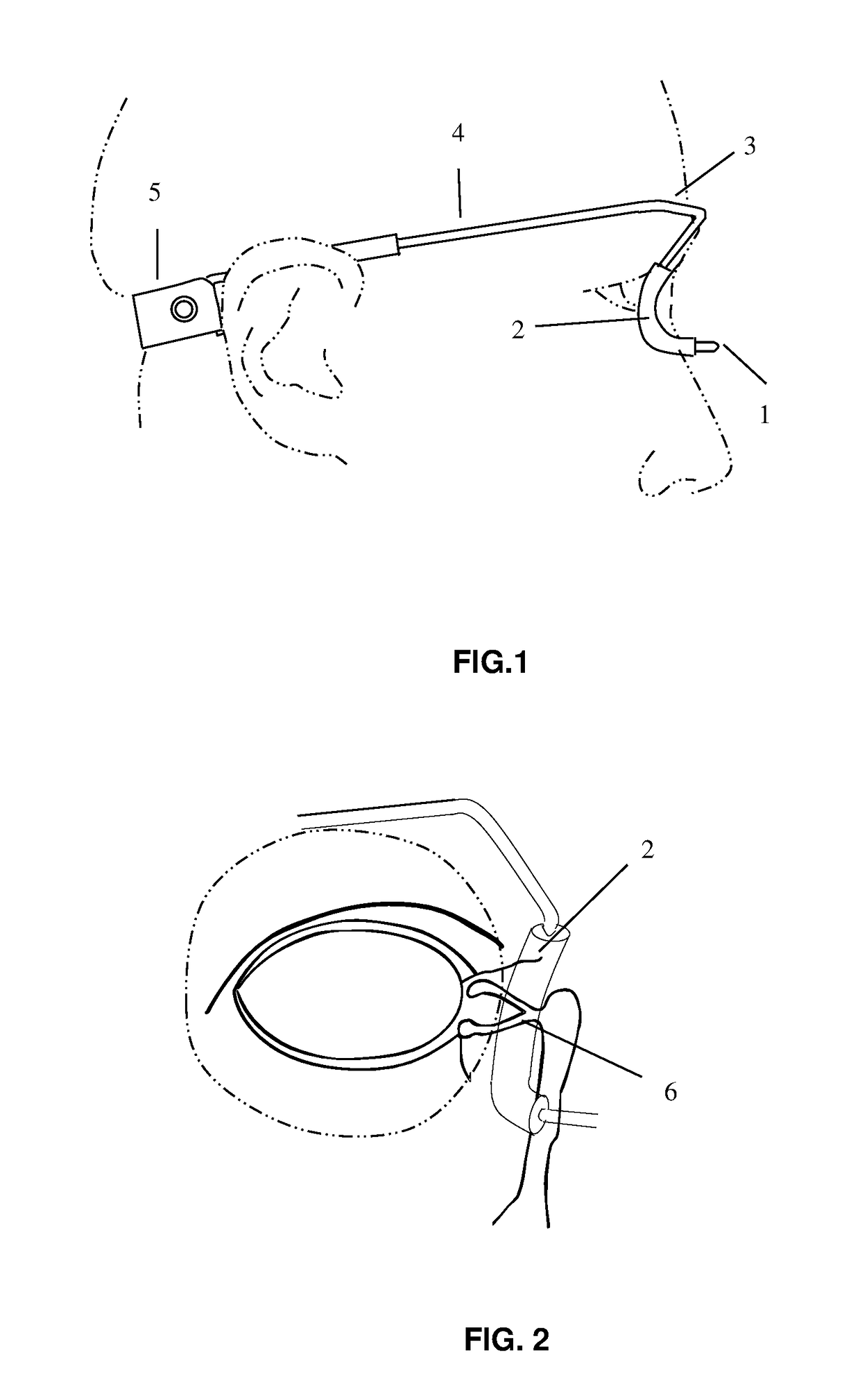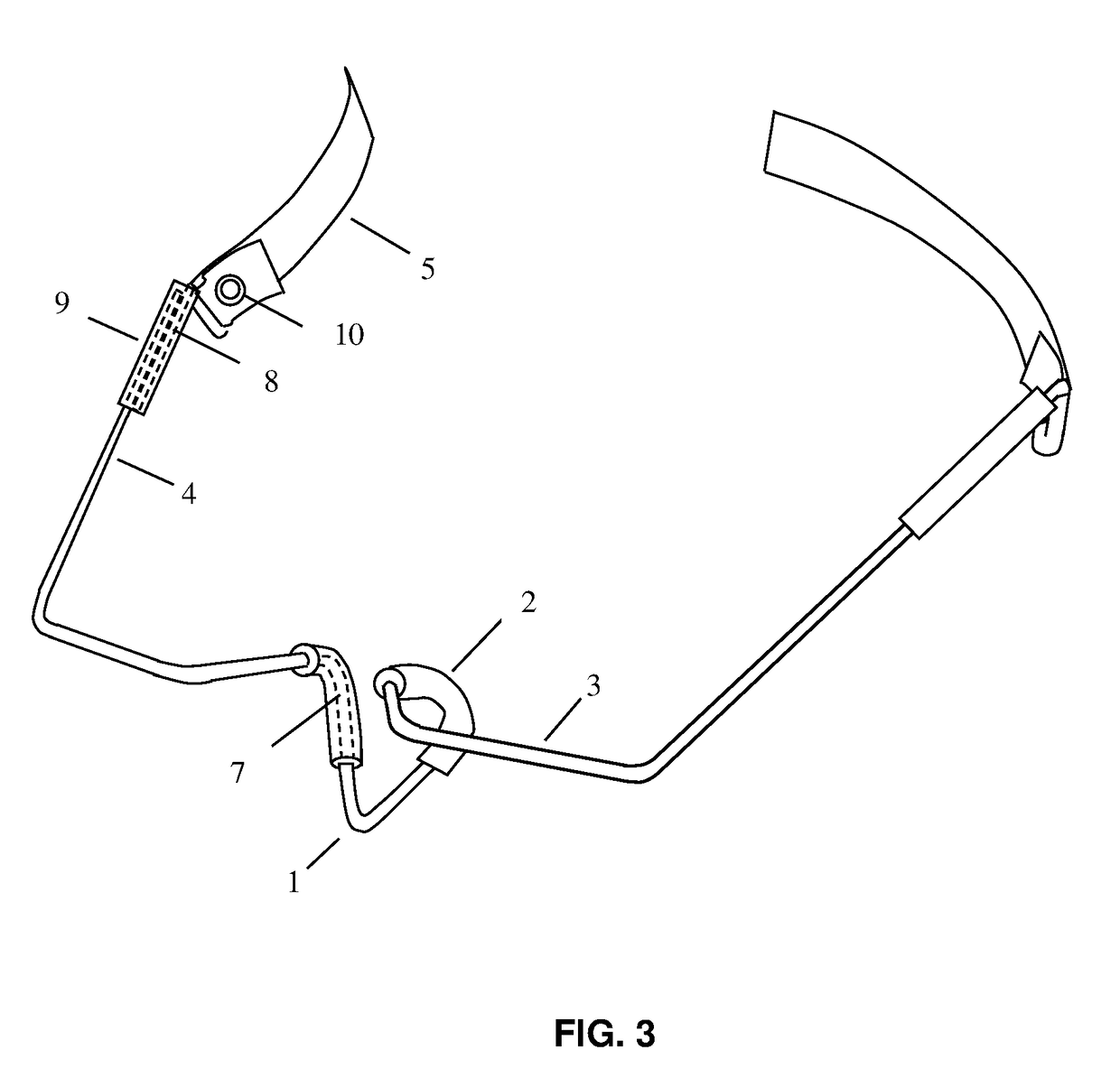Nasolacrimal Compression Device
a compression device and nasolacrimal technology, applied in the field of medical devices, can solve the problems of bitter taste, inconvenient fitting, and leakage of eyedrops, and achieve the effect of reducing outflow and reducing burden
- Summary
- Abstract
- Description
- Claims
- Application Information
AI Technical Summary
Benefits of technology
Problems solved by technology
Method used
Image
Examples
Embodiment Construction
[0022]This device frame is made of plastic coated soft carbon steel wire with skin contact portions covered with non-latex rubber sleeves. It is almost identical to a spectacle frame but is fully adjustable. The device frame width, nose bridge frame width, nose pad curvature and temple length can all be adjusted by hands to fit individual users.
[0023]Referring now to FIG. 1, the side view of a person wearing the device. The device frame has a central point 1 where curved nose pad segment 2 meet. The curved nose pad segment extends to the frontal segment 3 and the frontal segment extends to the temple segment 4. The hook and loop fastening band 5 go around the back of person's head.
[0024]Referring now to FIG. 2, the anatomical site for applying the device. The nose pad 2 sits on top of the nasolacrimal duct 6. The nose pad is shaped concave inward to fit the contour of the face in the nasal aspect of the orbital rim. The graphic illustrates a nose pad sitting across the nasolacrimal ...
PUM
 Login to View More
Login to View More Abstract
Description
Claims
Application Information
 Login to View More
Login to View More - R&D
- Intellectual Property
- Life Sciences
- Materials
- Tech Scout
- Unparalleled Data Quality
- Higher Quality Content
- 60% Fewer Hallucinations
Browse by: Latest US Patents, China's latest patents, Technical Efficacy Thesaurus, Application Domain, Technology Topic, Popular Technical Reports.
© 2025 PatSnap. All rights reserved.Legal|Privacy policy|Modern Slavery Act Transparency Statement|Sitemap|About US| Contact US: help@patsnap.com



